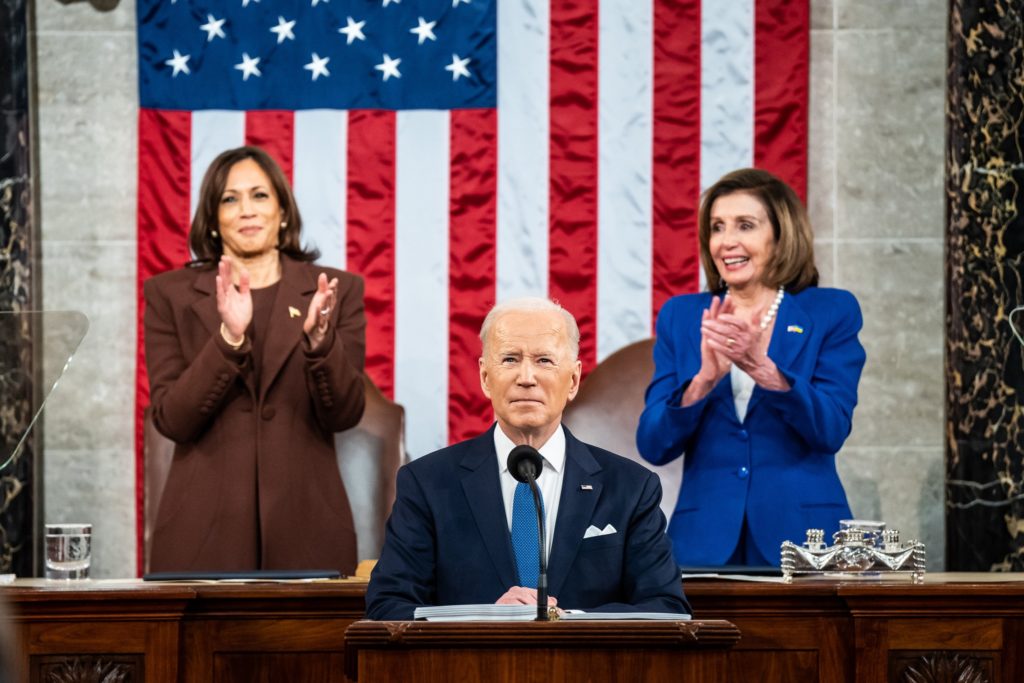
Made In America was a major theme in the president’s first State of the Union address.
When President Biden talked about his economic agenda in last night’s State of the Union address, he was talking about his commitment to American manufacturing.
When he brought up the bipartisan infrastructure bill passed last year, he talked specifically about the Buy American commitments in them. When he laid out his plan to fight inflation, he brought up domestic investment and the reshoring of supply chains.
This makes sense because by many measures, 2021 was the year factories came back to the American economy. It’s been a wave of reindustrialization that other presidents have promised to realize but failed to achieve.
Last year saw more than 350,000 new manufacturing jobs added in the U.S., the most annually in decades. In a sector defined for a generation by industrial flight, the script was flipped as factory announcements from companies like Intel, Ford, General Motors, and Texas Instruments piled up.
Perhaps some of the broader economic progress, like a soaring GDP and rising wages, are the result of the economy re-opening after the initial 2020 onset of Covid – but that can’t be said about the manufacturing revival. It hasn’t been luck or a coincidence, and it certainly hasn’t been inevitable; in fact, its potential was dismissed for years by economic pundits as naïve and nostalgic.
Instead, it was the conventional wisdom that was misguided. It was understood that the broad adaptation of just-in-time production and ocean-spanning supply chains was the culmination of an economic end of history. Now many of those supply chains are drawing back. And that’s happening for a few reasons.
For one, the pandemic has demonstrated how obvious our over-reliance on imports is. Immediately, it was PPE and hand sanitizer. Two years in and it’s construction materials and semiconductor chips. Now, informed by Covid-19 and the first conventional war in Europe in decades, businesses are considering their own resiliency and have an appreciation for pairing the sources of essential inputs with the location of final assembly.
There’s also an enormous industrial pivot underway as auto companies shift toward the production of electric vehicles in the United States, part of the broader renewable energy awakening. In 2021 tens of billions of dollars in private investment were announced, from lithium ion battery plants to solar panel factories, and even greener steel mills.
And lastly, President Biden has acted accordingly on the aforementioned timing, in a way that his immediate predecessors didn’t. Barack Obama identified growing manufacturing employment as an economic imperative in the aftermath of the Great Recession, but his reluctance to embrace an industrial policy and robust trade enforcement kept his other research and development policies from taking root. Donald Trump talked about bringing those jobs back ad nauseum during his term, but after slashing the corporate tax rate and putting up tariffs his administration seemed to run out of ideas.
The Biden administration hasn’t. It has been very purposeful in this project, and in its first year it has seen through a significant public investment in the form of that infrastructure bill, which included billions of dollars to lay the groundwork for the advent of widespread EV adaptation. It made sure that bill was backed by those government procurement “Buy America” rules to guarantee much of its benefit will remain in the domestic economy. And it has maintained some of the tariffs Trump left for it to create a favorable market for domestic manufacturing activity. Biden’s team is currently devoting much of its domestic agenda to advance a bill that would seed industries crucial to our national and economic security, which he mentioned last night. It’s a good idea; this bill meant to foster our national competitiveness would address things like like battery and semiconductor production, and sharpen our trade tools to counter the anti-competitive actions of China and other governments.
All are tangible policy examples that signify this administration’s intent, which is to re-establish critical industries in the United States. With those newly established domestic industries comes the potential for broad employment despite an increase in industrial automation. And, notedly, manufacturing jobs pay a wage premium for workers who have not completed a four-year college degree, who make up the majority of the US workforce.
President Biden is working to rebuild ladders to the middle class that were tipped over by globalization, poor policy support, and structural economic inequity. And in a political climate marked by divisiveness, revitalizing the manufacturing sector to achieve our economic and national security goals continues to draw broad public support.
I can’t imagine many Americans — left, right, or center — believed Joe Biden would spark an industrial rebound. But he has. We’re experiencing it now, and he’s putting the policies in place to sustain it.
